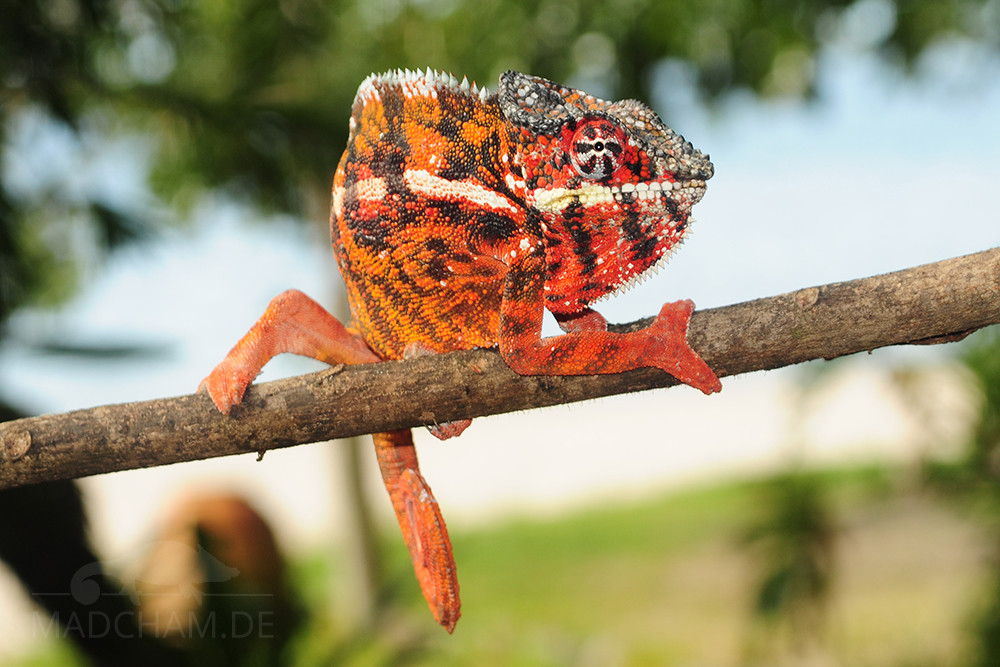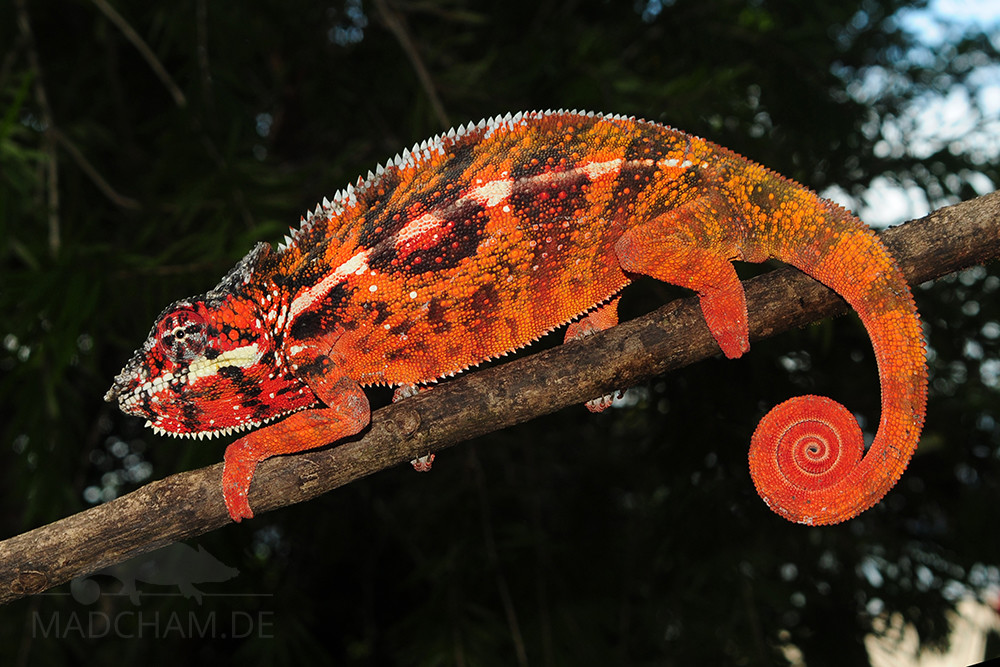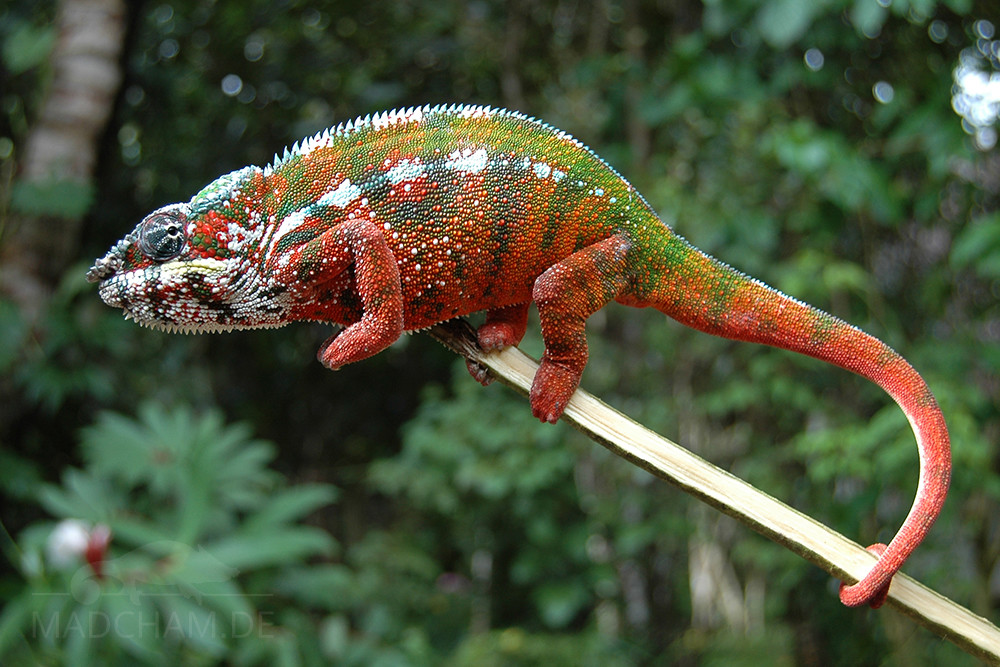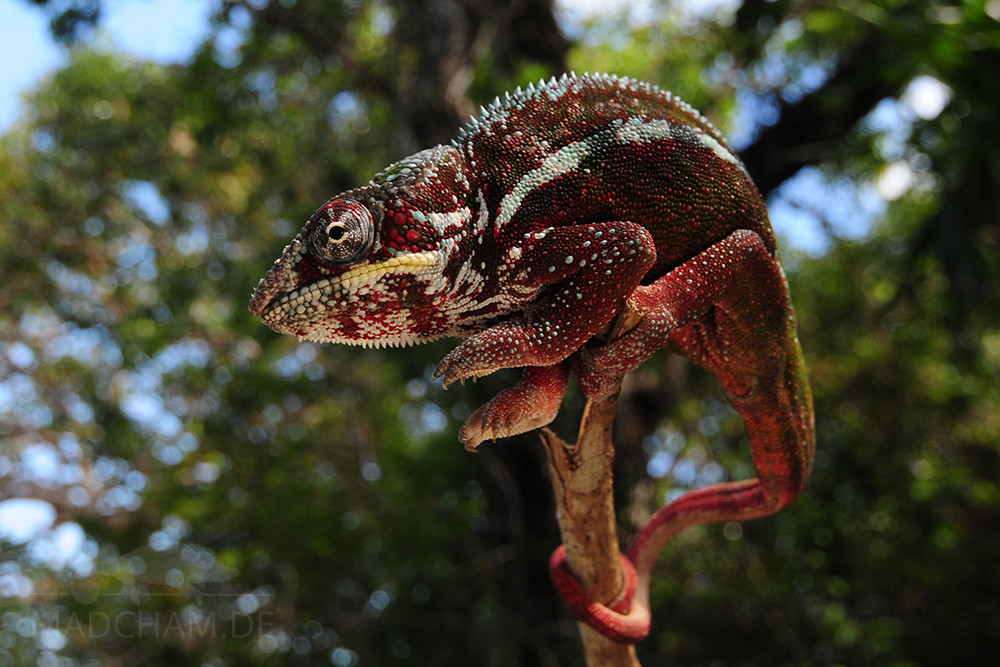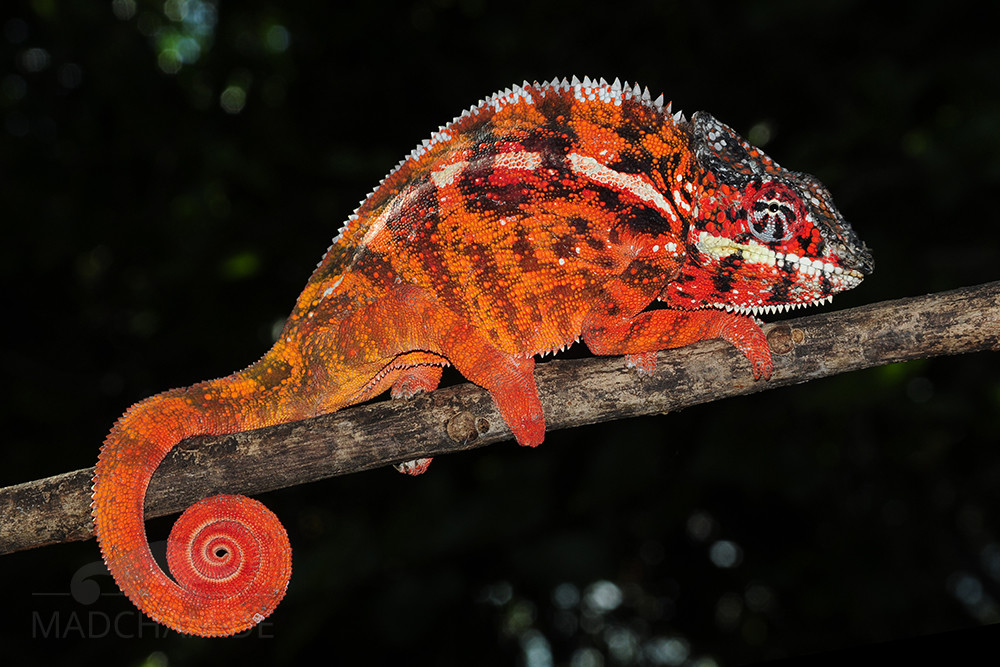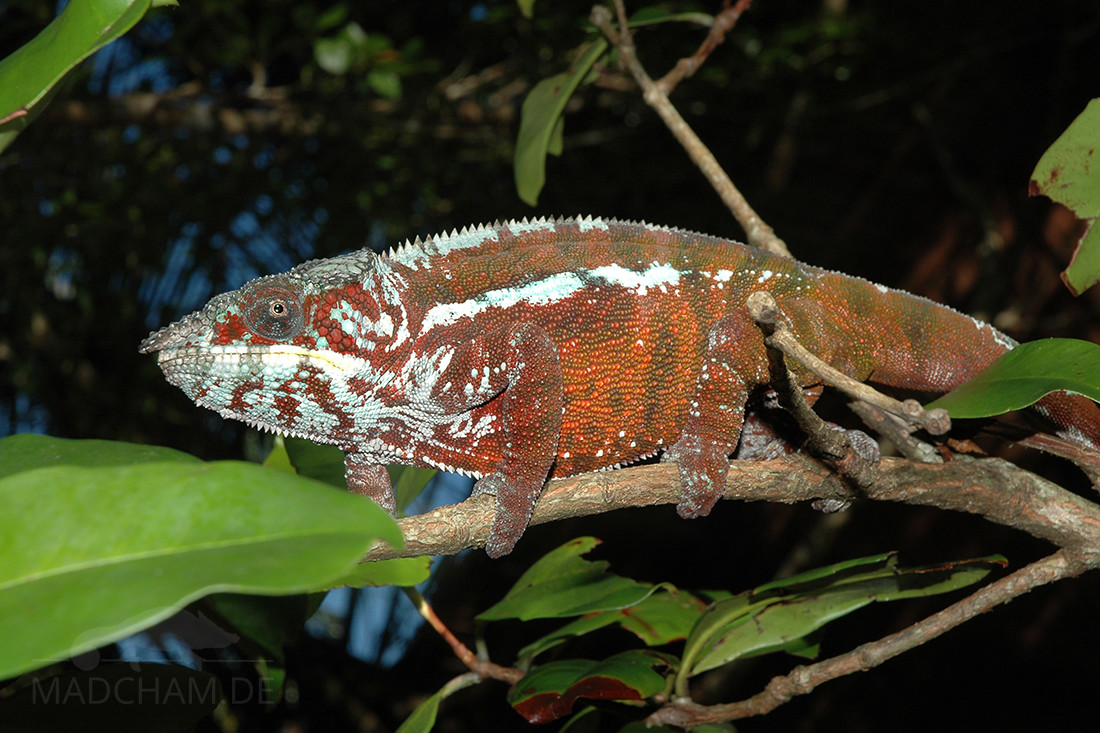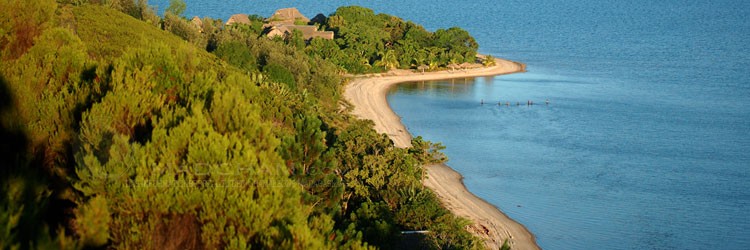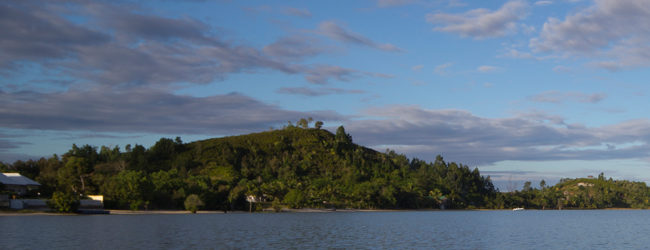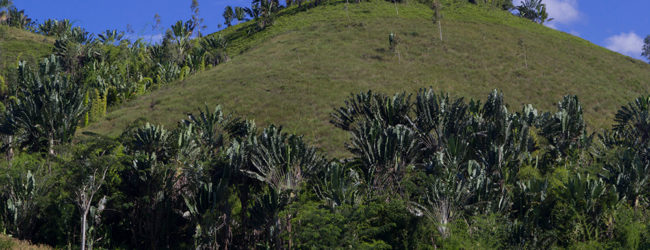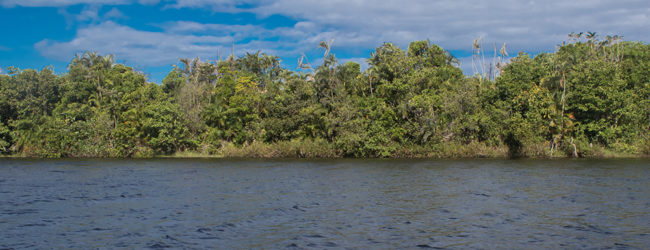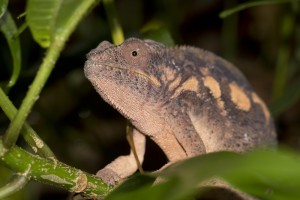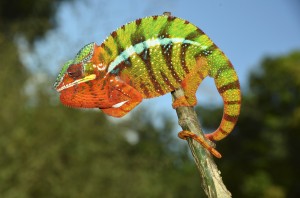Distribution of the local form Manambato:
Manambato is a small, narrow and long hut village in the Toamasina region on the east coast of Madagascar. It lies directly on the Rasoabe Lake, the “Lake of Kings”. Some hotels are located directly on the sandy beach of the lake, and around the village, there is very hilly land with sugar cane and corn plantations. Manambato is used by many Madagascans as an inexpensive resort, while the hotels along the Canal des Pangalanes and on lake Ampitabe, 28 km away, are used more by foreign tourists. Manambato can be reached by car from Toamasina (Tamatave) within two hours, it is about 90 km south of Tamatave. The last 7 km to Manambato lead over a holey off-road path and through a small river to Lake Rasoabe.
Although panther chameleons can be found in Manambato, many animals are killed here by locals out of superstition. At the moment one has to walk a little further along the lake to discover animals in overgrown secondary vegetation less frequented by bathers.
Appearance of the local form:
The males of the local form here are red-orange colored with dark stripes. Some specimen have also green accents.
Weight table
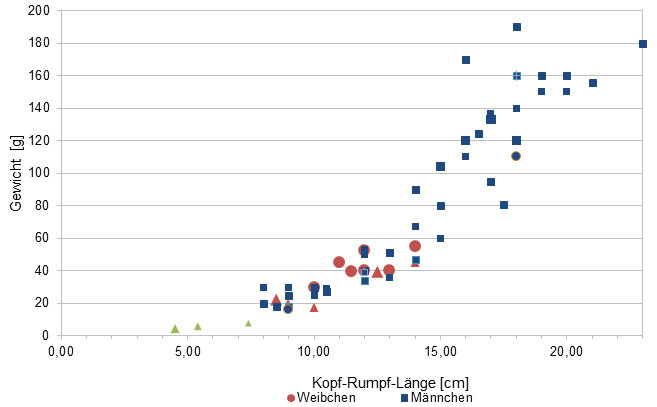
Gewicht = weight in grams, Kopf-Rumpf-Länge = snout-vent-length in cm, Weibchen = females, Männchen = males
Since 2015, we have been measuring the weights of chameleons found by us in Madagascar, as far as the animals (and our scales) participate. In the long term, we aim to obtain an average weight in relation to snout-vent-length (measured from the tip of the nose to the cloaca) for each species from as many measurements as possible. It is important to know that all weights were measured towards the end of the rainy season (= best food supply), so these should be maximum weights on Madagascar. Triangular symbols in females mean not pregnant, round symbols mean pregnant. In Furcifer pardalis, contrary to our original assumption, it has so far turned out that there are no serious differences in the ratio of SVL to weight between the individual local forms.
| Jan | Feb | Mar | Apr | May | Jun | Jul | Aug | Sep | Oct | Nov | Dec | |
| Average temperature | 26 | 26 | 26 | 25 | 24 | 22 | 21 | 21 | 22 | 23 | 25 | 26 |
| Minimum temperature | 22 | 23 | 21 | 19 | 17 | 17 | 17 | 17 | 18 | 19 | 21 | 22 |
| Maximum temperature | 30 | 30 | 30 | 29 | 28 | 26 | 25 | 27 | 26 | 27 | 29 | 30 |
| Rain days | 20 | 19 | 20 | 15 | 14 | 13 | 16 | 15 | 13 | 13 | 15 | 19 |
We have collected the data given above over several years with thermometers and hygrometers at the finding places of the chameleons. "Average temperature" means that values of a whole month have been calculated to one average value per month. For example all measured minimum temperature values of February have been calculated to one average minimum temperature for February. In plain language, this means single peak values of a day may be a little higher or lower than the average minimum and maximum temperatures. It is possible that a location has an average maximum temperature of 29°C, but one day during that month it had 33°C or even 35°C there.
Two examples of a daily course of temperatures in the rainy season can be found below. Both were recorded with data loggers in 2023.
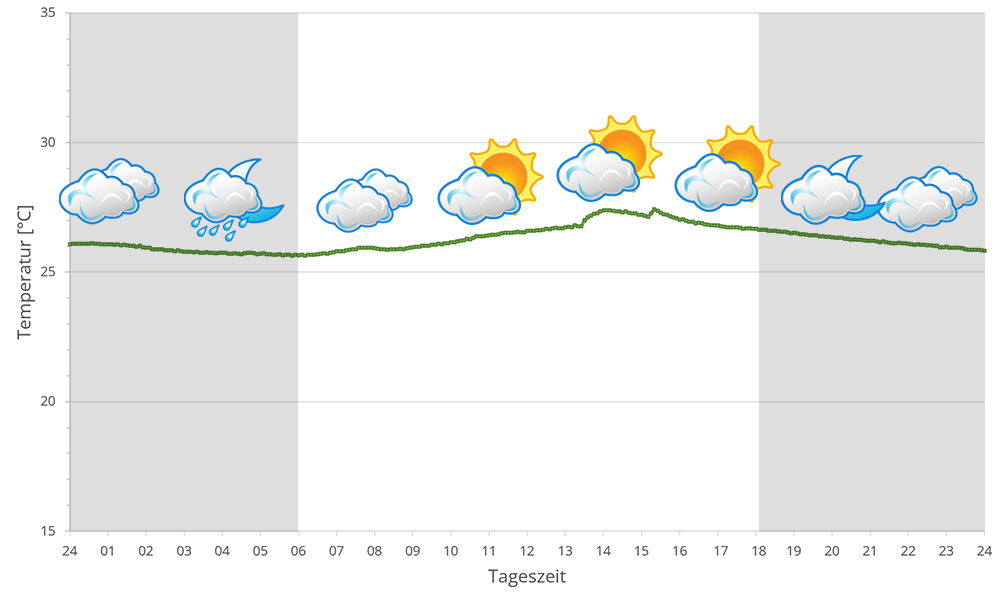
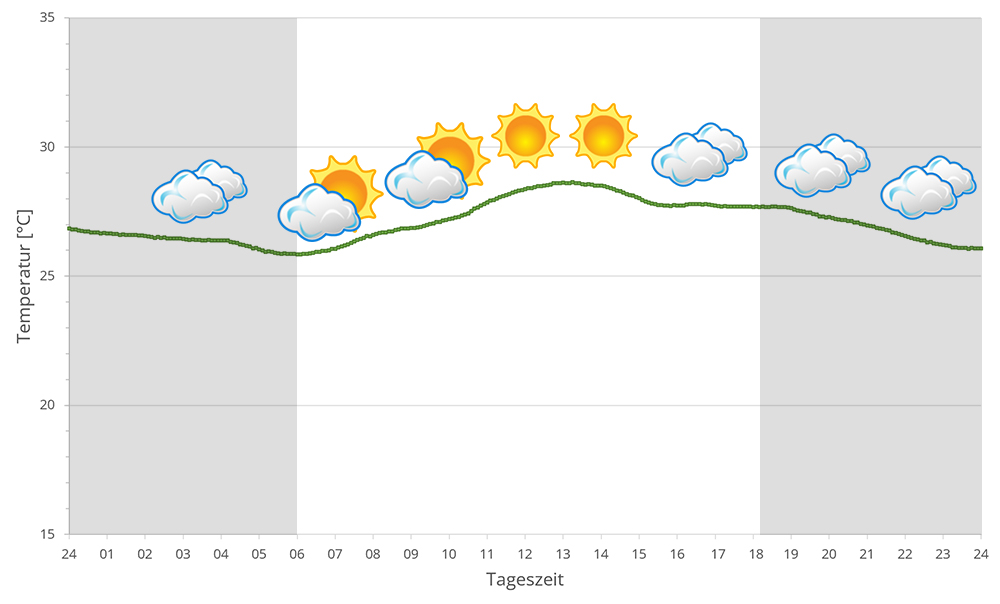
The climate at Lake Ampitabe and in Manambato is warm all year round, and the nearby Indian Ocean usually brings a light breeze. This makes it a popular place for travelers to relax - it never gets cold here. During the day temperatures can easily exceed 30°C, in the dry season from April to October they are slightly lower.
At night the temperatures cool down a bit. But the night temperature never goes far below 20°C. During the whole year, there is a moderate amount of rainfall, so that the rain forest remains continuously green. In 2023 we used data loggers to measure relative humidity on different days around Lake Ampitabe during the rainy season, the data can be found below.
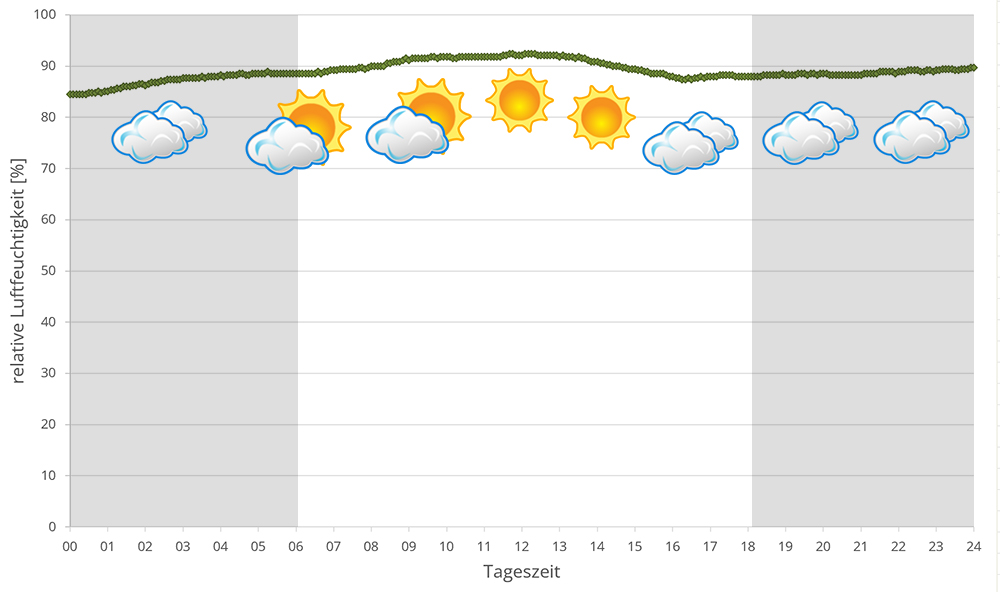
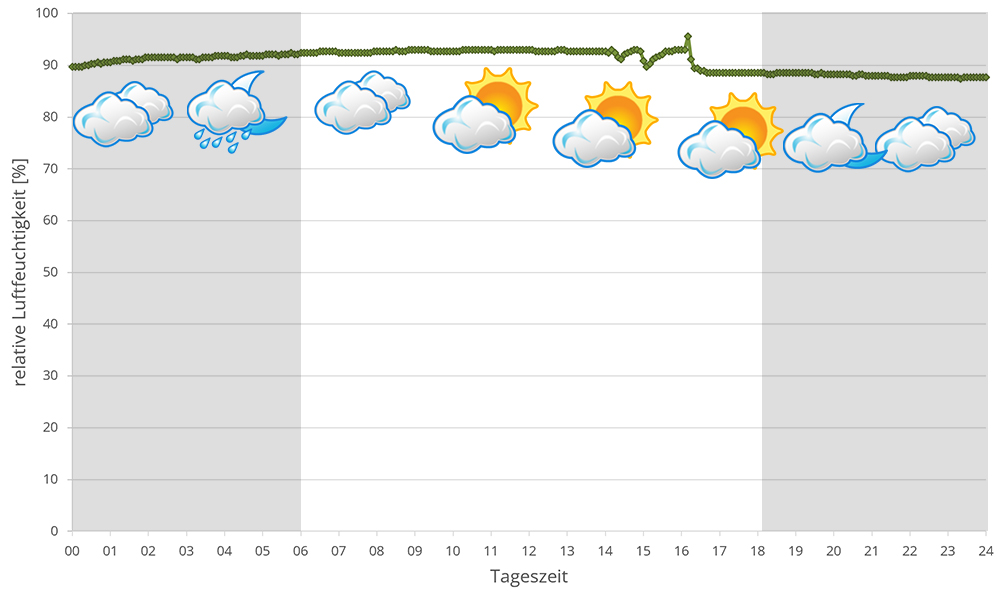
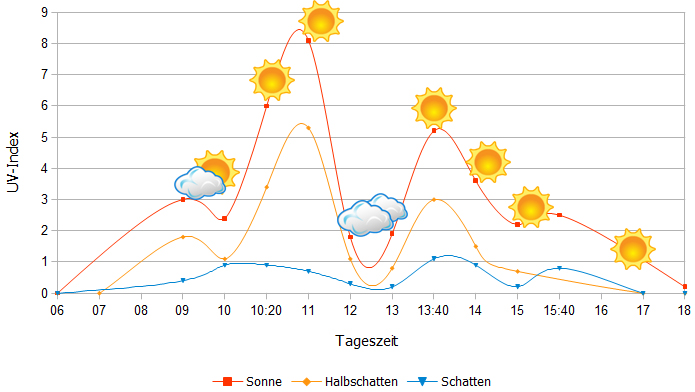 Tageszeit = day time, Sonne = sun, Halbschatten = half shade, Schatten = shade
Tageszeit = day time, Sonne = sun, Halbschatten = half shade, Schatten = shade
We have measured UVB data with a Solarmeter 6.5 in spring (beginning of April) at the peak of activity of chameleons in Madagascar. We always measured the values that a chameleon could maximally reach in its habitat.
In 2023, in addition to other climate data, we also measured the air pressure at the locations we visited in Madagascar. The following data is from different days during the rainy season around Lake Ampitabe. On the X-axis is the time of day or night. In Madagascar, the day begins around 6 am, and night falls at 6 pm. The Y axis shows the atmospheric pressure in hPa.
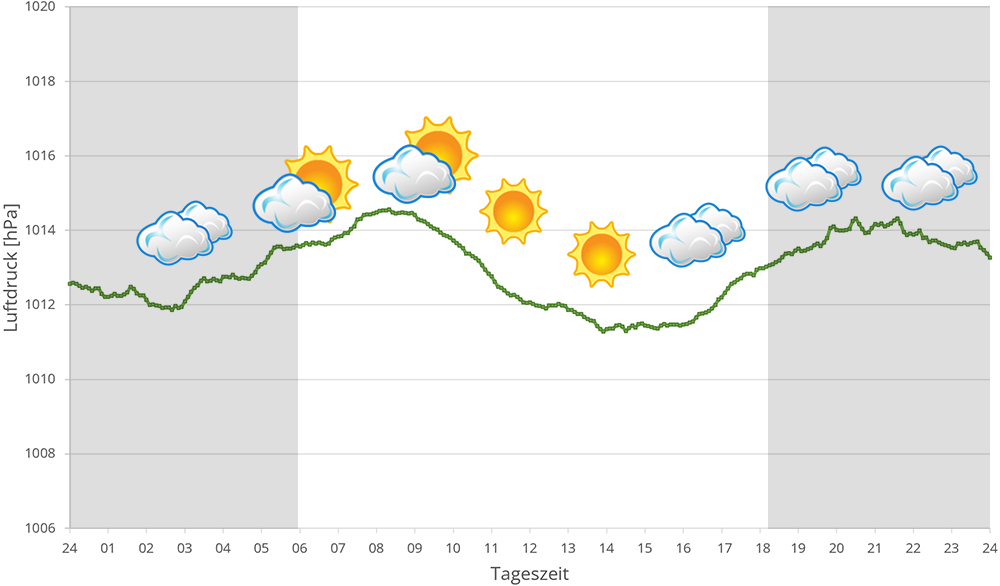
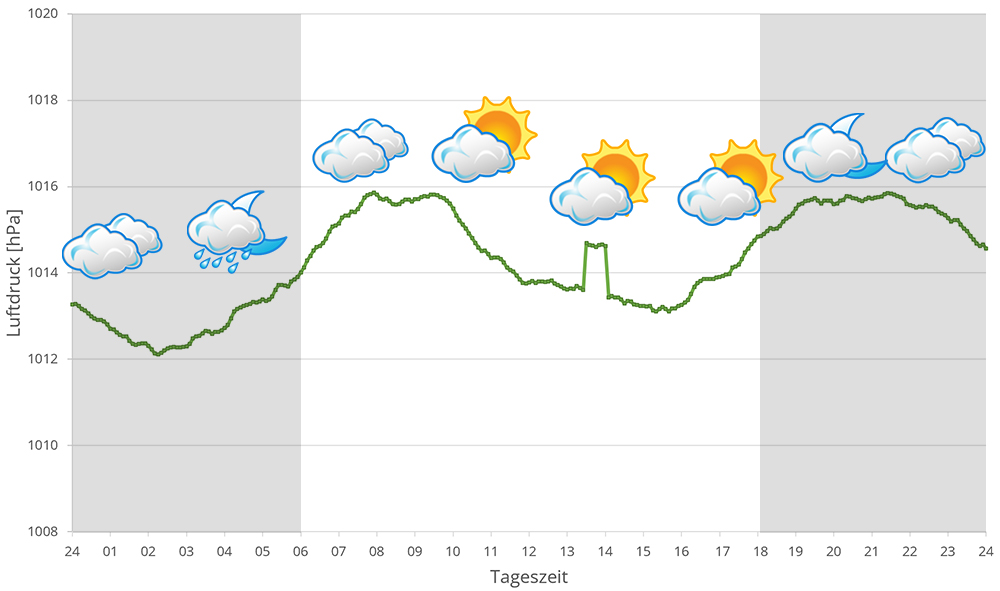
Habitat:
Due to the touristic use of lake Rasoabe, where Manambato lies, the habitat of the panther chameleons has been restricted a lot. You can still find them in some plantations, but they do not often occur nearby hotels anymore. The ground around Manambato is very sandy.

